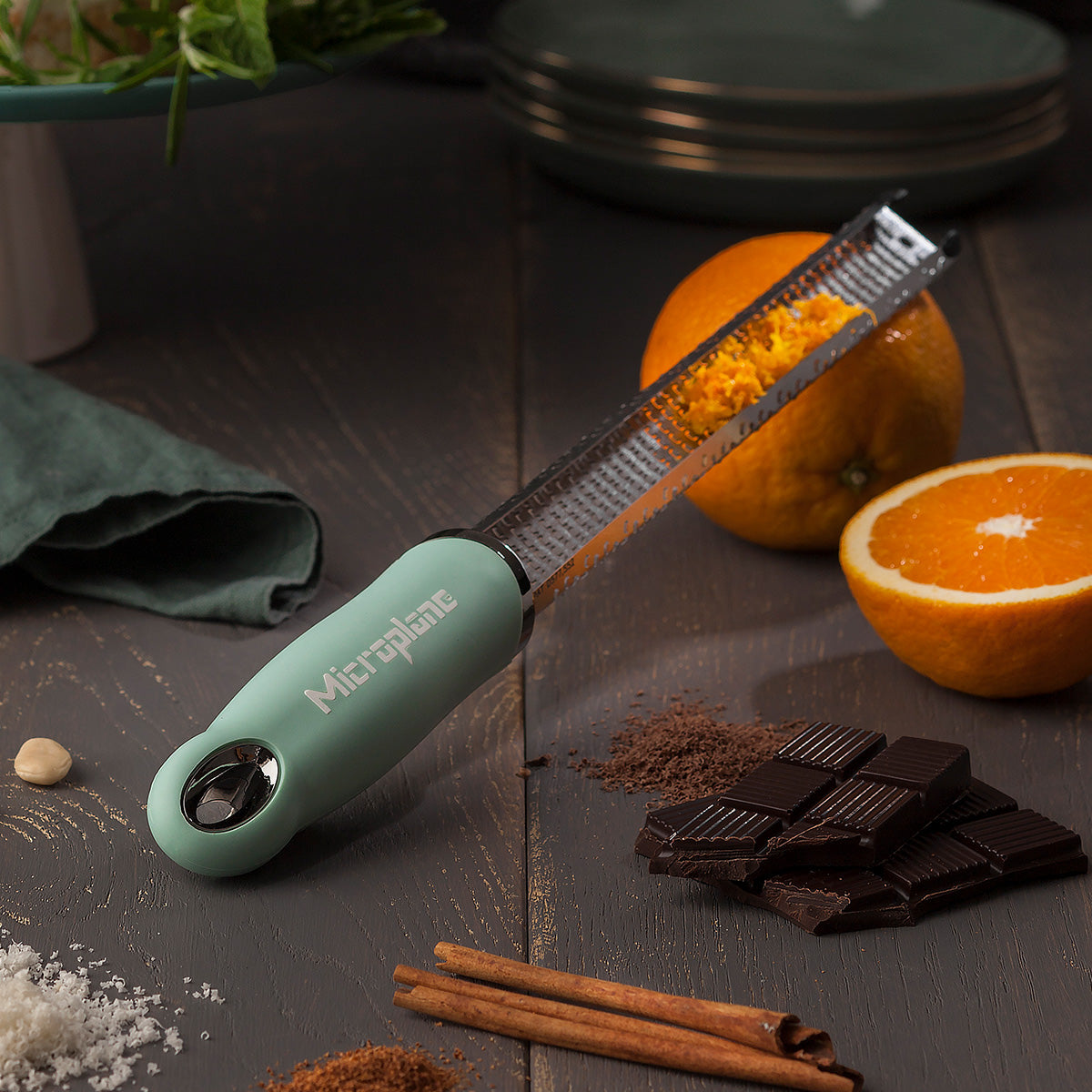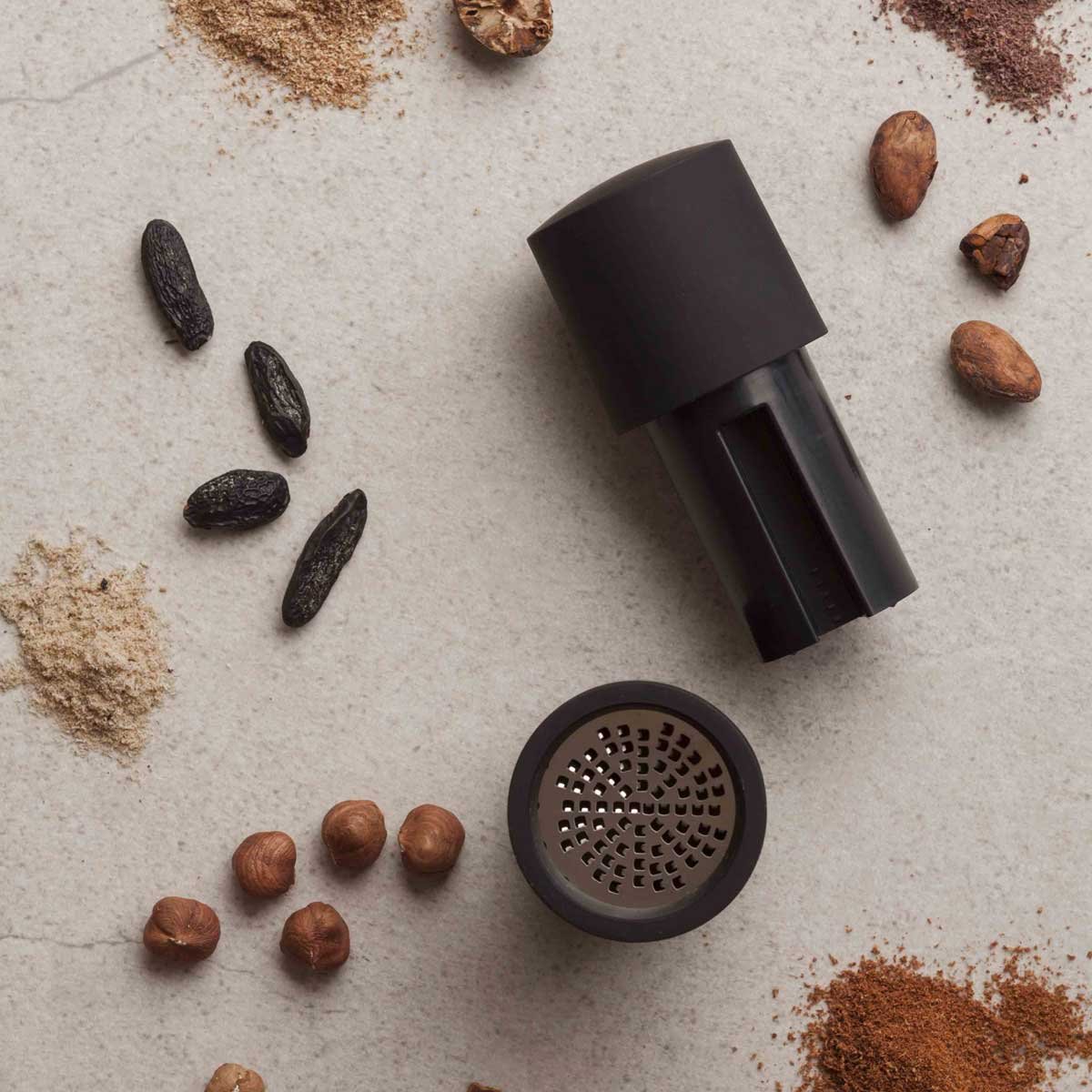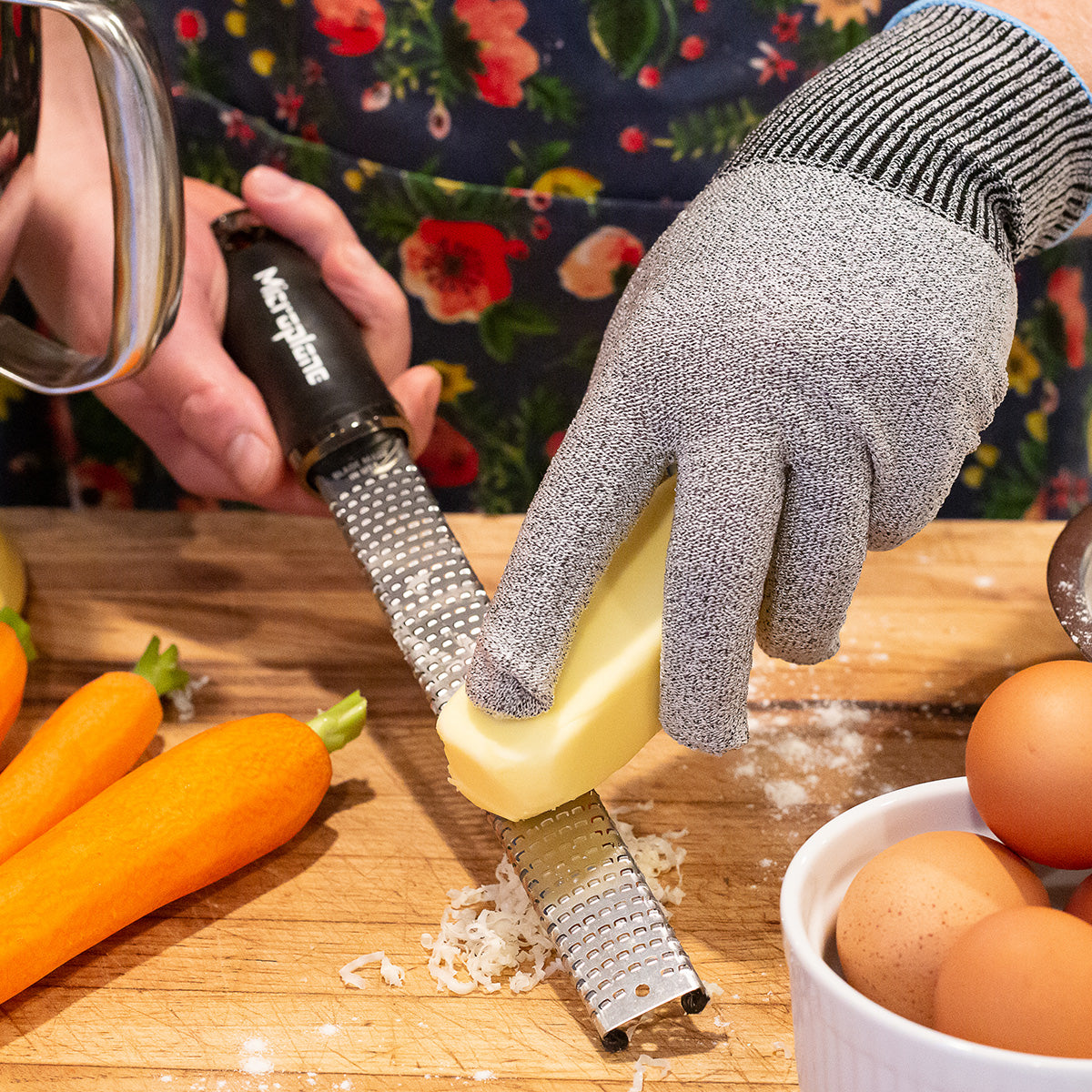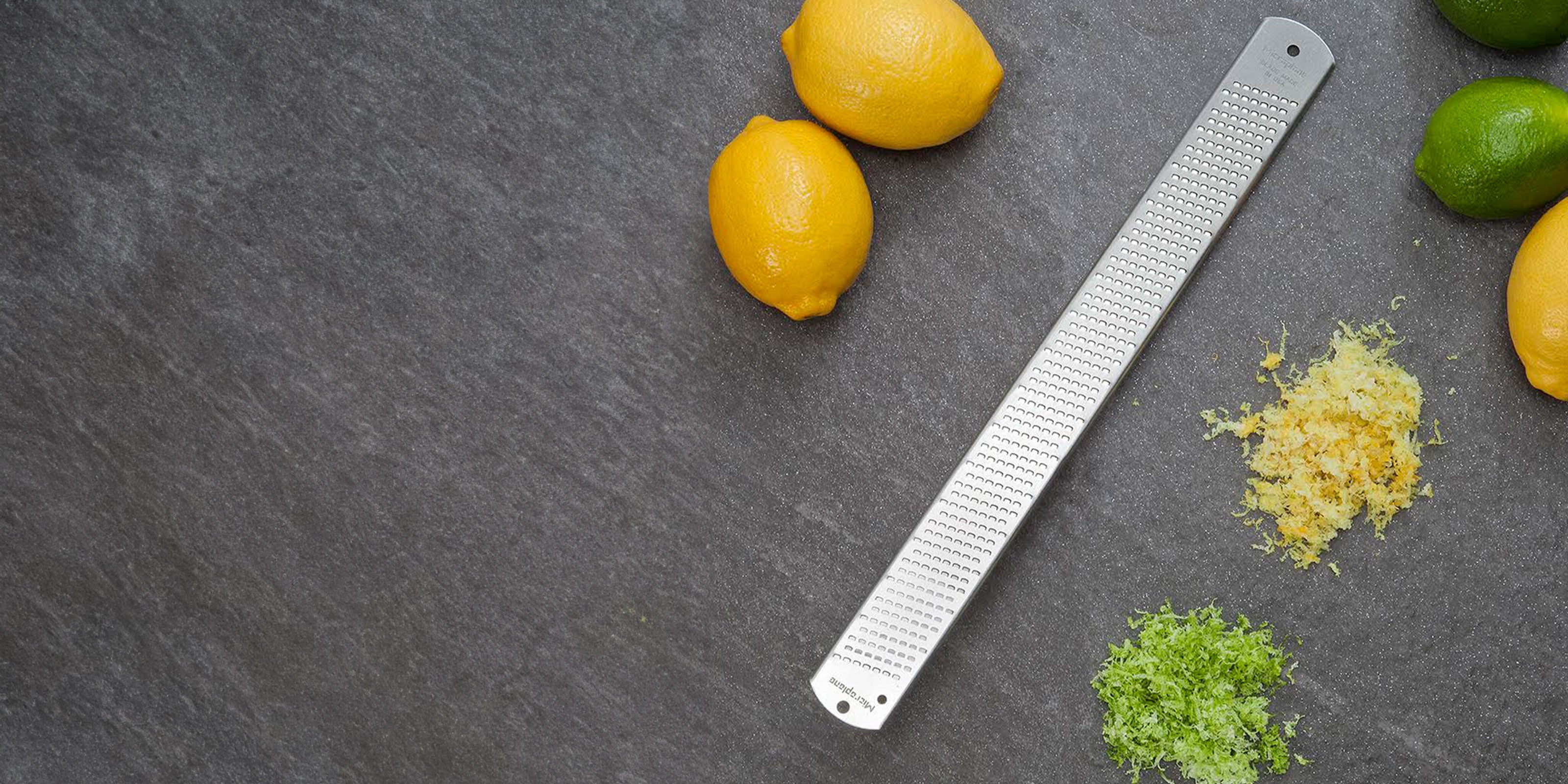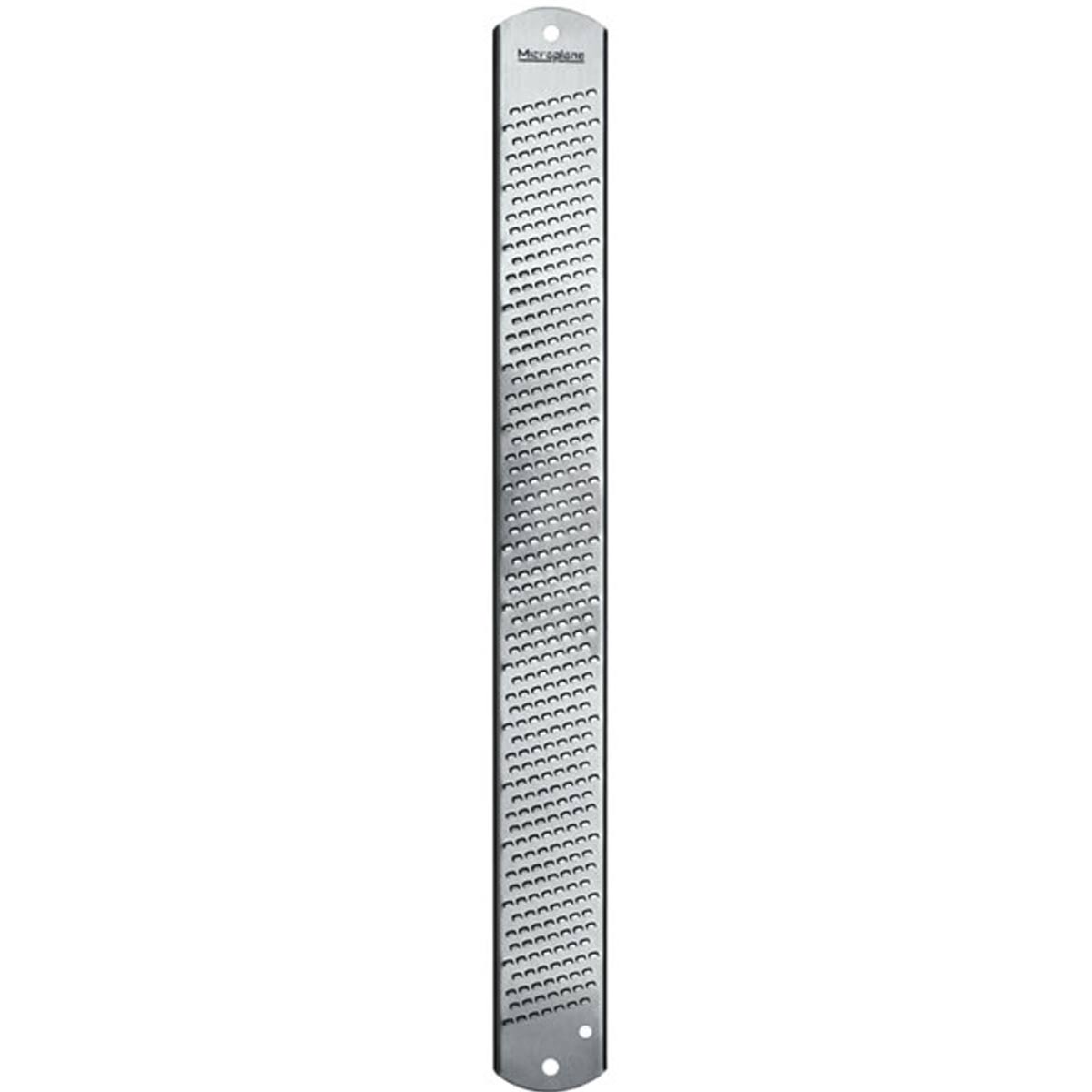
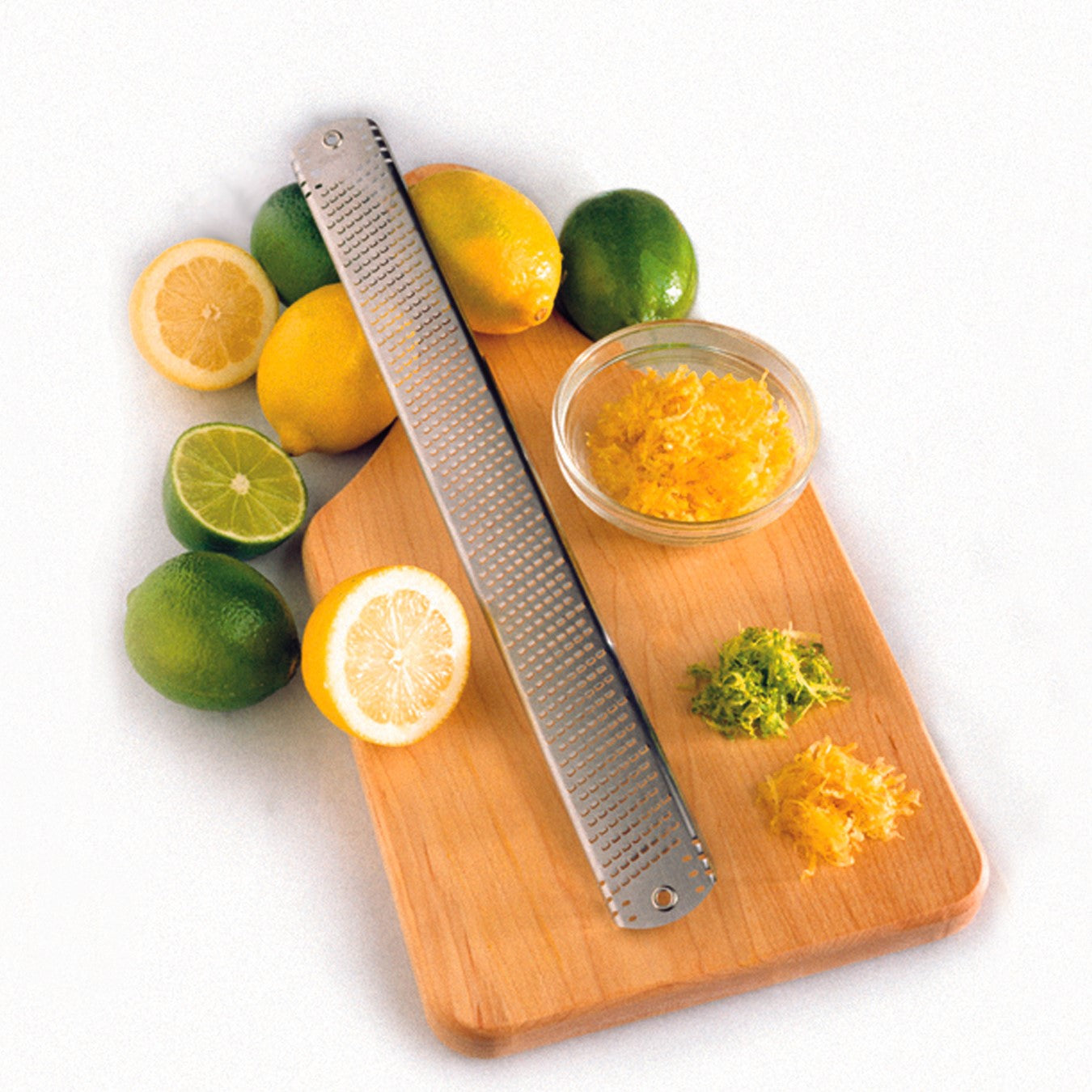
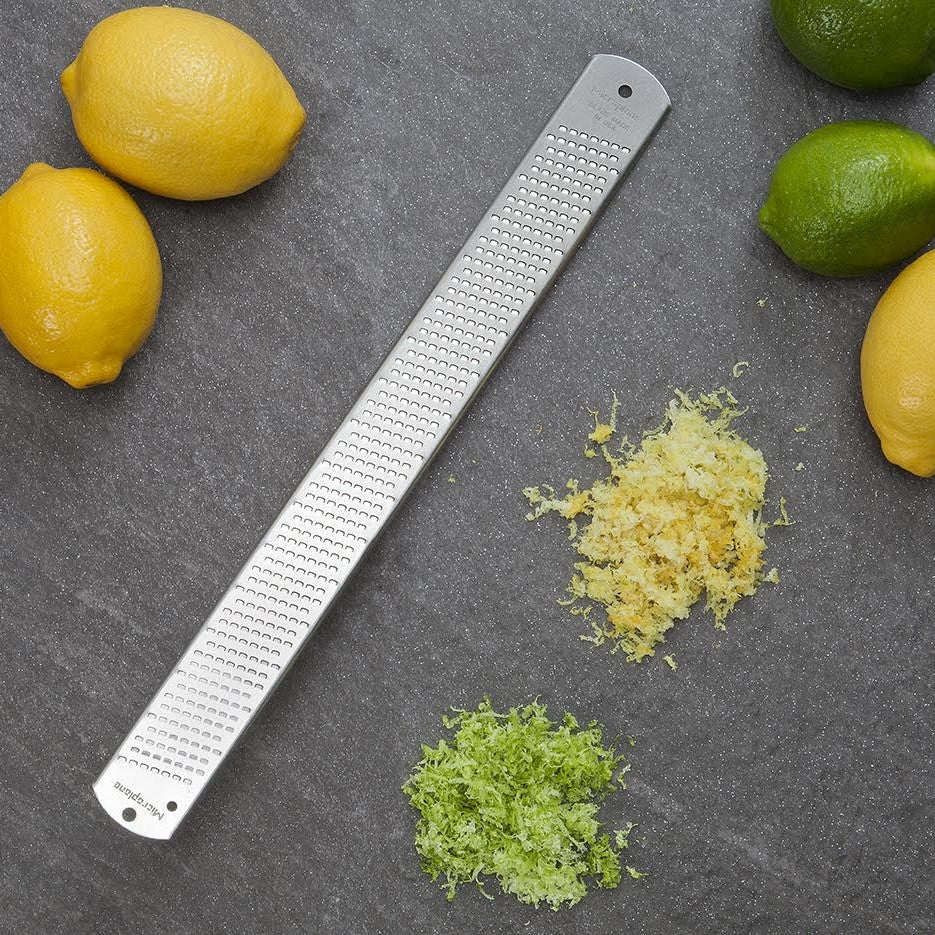
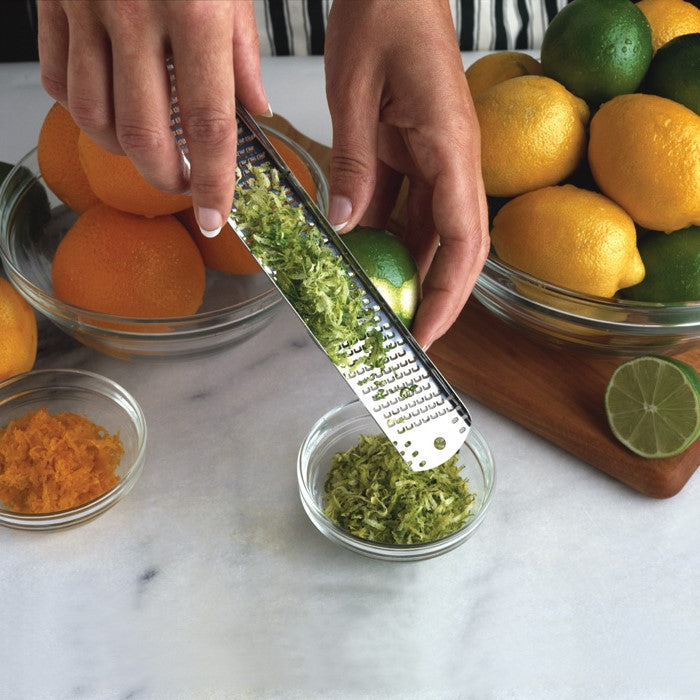
Classic Series Stainless Steel Zester (no handle)
Upgrade your kitchen toolkit with the versatile Microplane Stainless Steel Zester Grater, designed to fulfill all your zesting and grating needs. This premium-quality tool serves as an exceptional lime zester for adding a burst of citrus flavor to your dishes or drinks. It's also perfect as a parmigiano grater, ensuring you get finely grated cheese for your culinary creations.
Crafted from true stainless steel, this grater and zester maintains its sharpness and stays rust-free, ensuring durability and precision in every use. Its magnetic properties allow convenient storage by hanging it on your magnetic knife strip, keeping your kitchen organized. Each zester/grater includes a protective cover for safe storage.
Cleaning this zester/grater is a breeze. Simply rinse it immediately after use, and for those stubborn particles, utilize a kitchen brush on the underside of the blade. For your convenience, it's also dishwasher safe, making it an easy addition to your daily culinary routines. Elevate your cooking game with the reliable and efficient Microplane Stainless Steel Zester Grater!
Shipping and Returns
At Microplane, we are committed to exceptional quality and craftsmanship for all our products. If you receive a damaged item, please contact us, and we will promptly send a replacement. If you're not totally satisfied with your Microplane.com purchase, you may return most new, unused items within 30 days of delivery for a refund.
Shipping information:
United States:
• 3-5 business day delivery
• Orders under $80 incur a $5.49 shipping fee
• Orders below 16 oz ship via USPS Ground Advantage
• For orders exceeding 1 lb, the choice of shipping carrier depends on the order's total value and delivery destination
Canada:
• Canadian shipping is available and includes Duties and Taxes in the Total
• Orders are shipped through DHL Ecommerce Parcel
• Shipping cost is based on the weight and dimensions of your order
We are currently able to ship to destinations within the United States and Canada.
Product Details
Outside the US?


